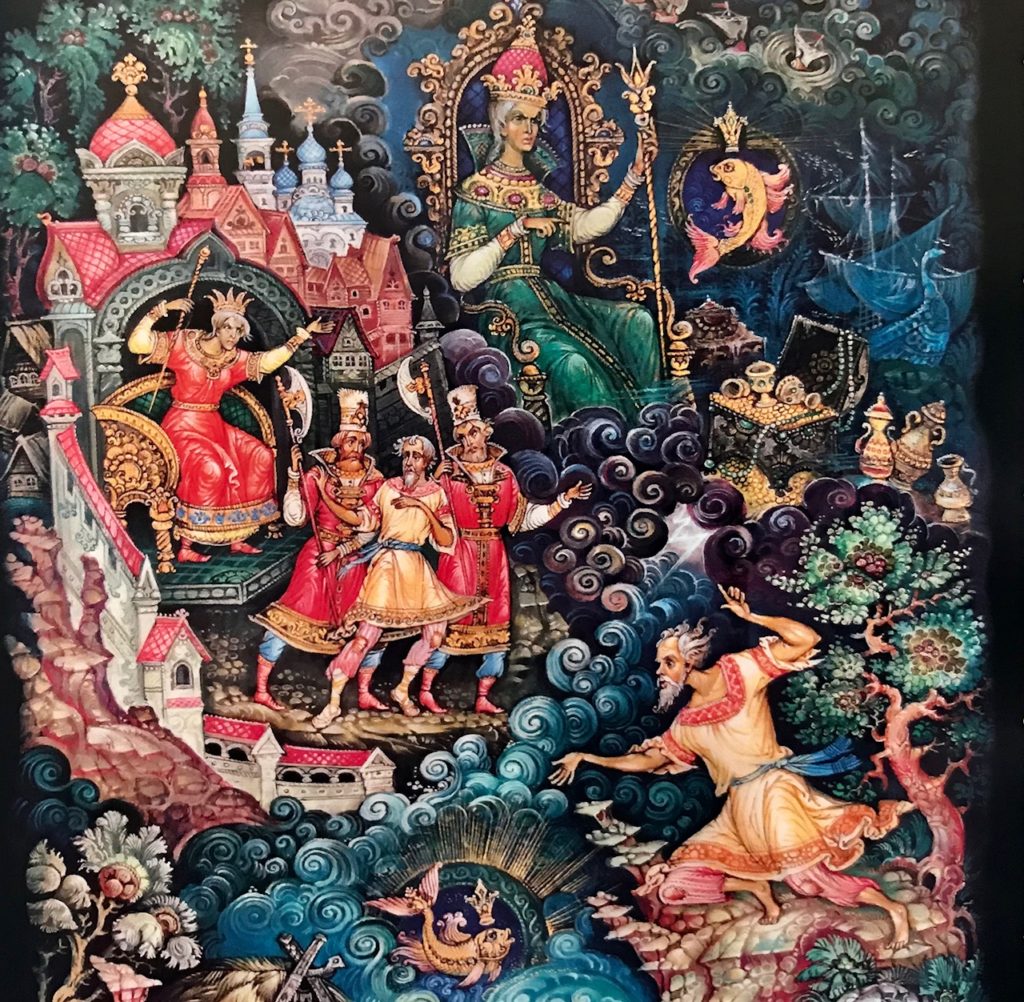
By P. F. Sommerfeldt –
The names Palekh and Kholuy, like Fedoskino and Mstera, may be only obscure villages in the Vladimir-Suzdal Ivanovo region of Russia to many people, but their rich legacy of lacquerware is anything but obscure. I first fell in love with Russian lacquerware when we lived in London off and on for six years. For our first Christmas in London, my husband gave me a Palekh miniature enamel brooch, which was something of a sacrifice on our meagre graduate student budget when he was a Ph.D. student there. This little brooch (see below) has a color palette of a dramatic black lacquer background highlight the narrative’s vibrant colors of red, orange and green surrounded with gilded decoration in tiny foliated motif. Its fantasy depicted in astonishing minute detail a Russian fairy tale scene of Prince Ivan and the Firebird (a magical bird often known elsewhere as a phoenix). In the fairy tale Prince Ivan receives a magical feather and one might think of Stravinsky’s 1910 Firebird Suite as the story is recounted in the famous ballet, but the narrative is much older in folklore. In the piece I wear on special occasions, one has to come close to appreciate the detail which must have been painted with brushes of only a few tiny hairs. This was what started our love affair with Russian lacquerware.
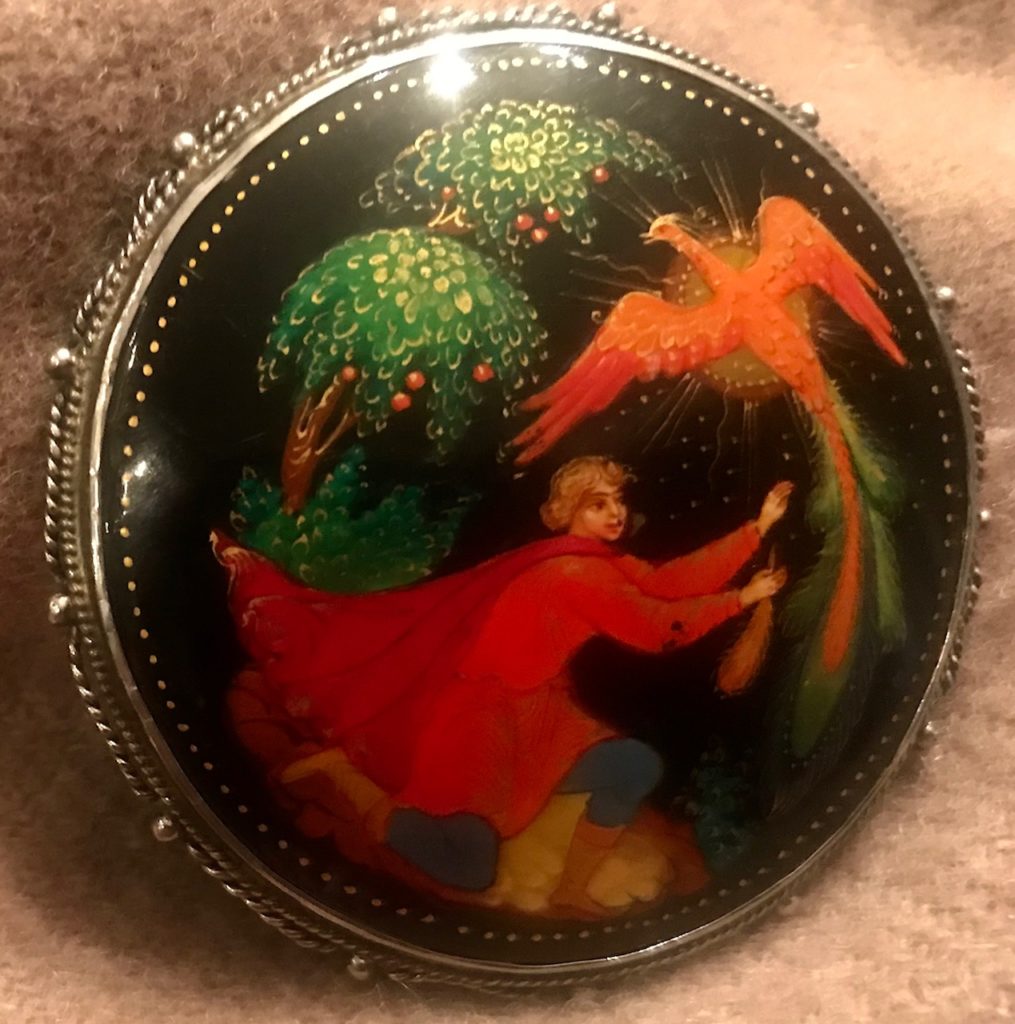
The tradition of Russian lacquerware – influenced by Byzantine flat perspective – spans at least four hundred years, but really took off in the 20th century as a sponsored art form when religion was persecuted and became a banned expression in art. Redirected icon painters thus enhanced a different secular tradition with their skills on either paper mâché or metal with an enamel base on which miniature paintings were lovingly rendered. Russian folklore instead became one of the most important sources for narrative. The four towns where lacquerware has flourished are Fedoskino, Palekh, Kholuy and Mstera, and each has a different style.
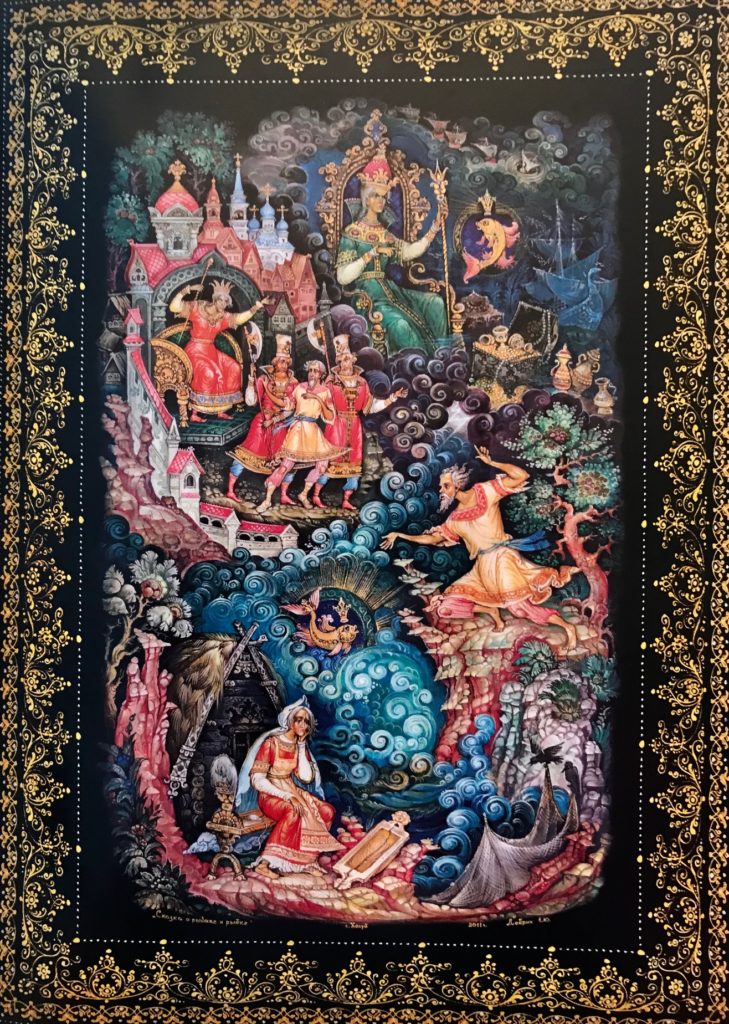
The above lacquerware image by Dobrin is one of my favorites, a retelling of the famous Brothers Grimm story about the old fisherman and his unsatisfied wife. Alexander Pushkin, Russia’s most beloved poet retold the story in 1833 and when we were in Russia in fall of 2017, we enjoyed Pushkin’s legacy in so many ways. We ate at the Cafe Pushkin in Moscow, went to the fabulous Pushkin State Museum in Moscow where much of the Troy treasure resides, saw Pushkin’s great bronze statue in St. Petersburg’s Mikhaylovskiy Skver (Park) – we could also see the statue from our hotel window in the Belmont Grand Hotel Europe – on our way back and forth to the Russian State Museum across the park, and last but not least, we fell in love at the Hermitage (we were there in the museum for a week) with a wonderful book, Pushkin’s Fairy Tales, edited by Natalia Morozova and published in St. Petersburg in 2017 by Yarky Gorod Publishers (also listed on their website at www.yagorod.ru). It is lavishly illustrated with Russian lacquerware images from Kholuy. This beautiful book may not be easy to obtain outside Russia (except through www.yagorod.ru) but the English translation version is excellent. Two contemporary Kholuy lacquerware artists in the book that really attracted our attention are D. Dobrin and M. Griaznov. The above image and the lead image for this article are by Dobrin from Pushkin’s Tale of the Fisherman and the Little Fish.
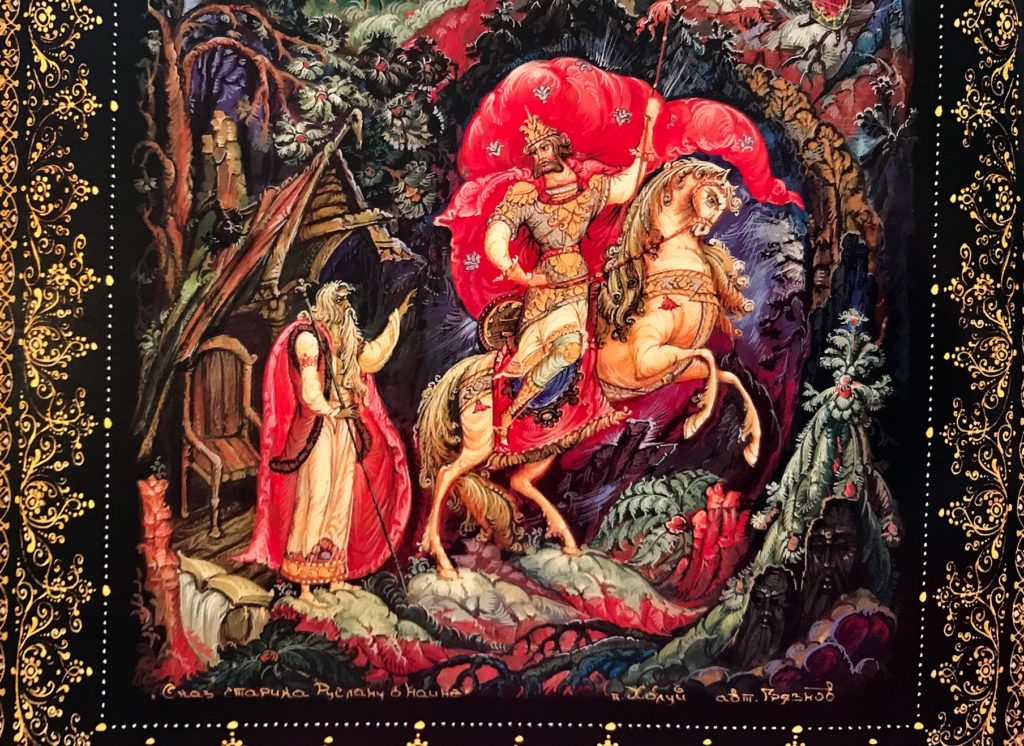
The Kholuy lacquerware tradition formally began in the 19th century as an offshoot of the 17th century icon painters of the Trinity-Sergius Monastery. The Kholuy art school was founded by the Alexander Nevsky brotherhood from Vladimir in 1882 and has flourished since. The Kholuy artists working today that appear in this book and its publisher and editor acknowledge Dmitry Kuznetsov for assistance. Other images of a Knight and Dragon tale by D. Dobrin also appear below.
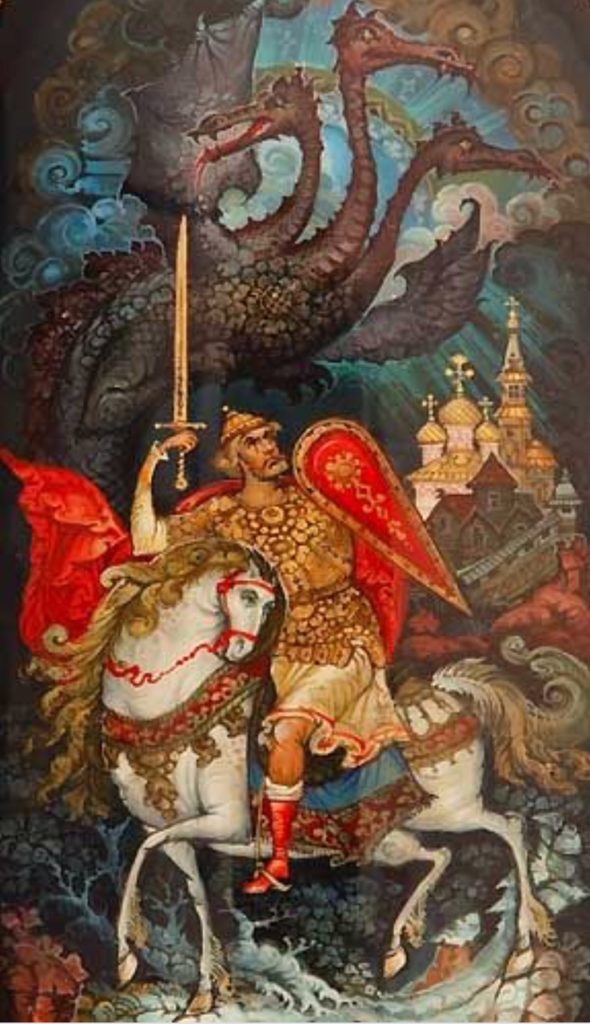
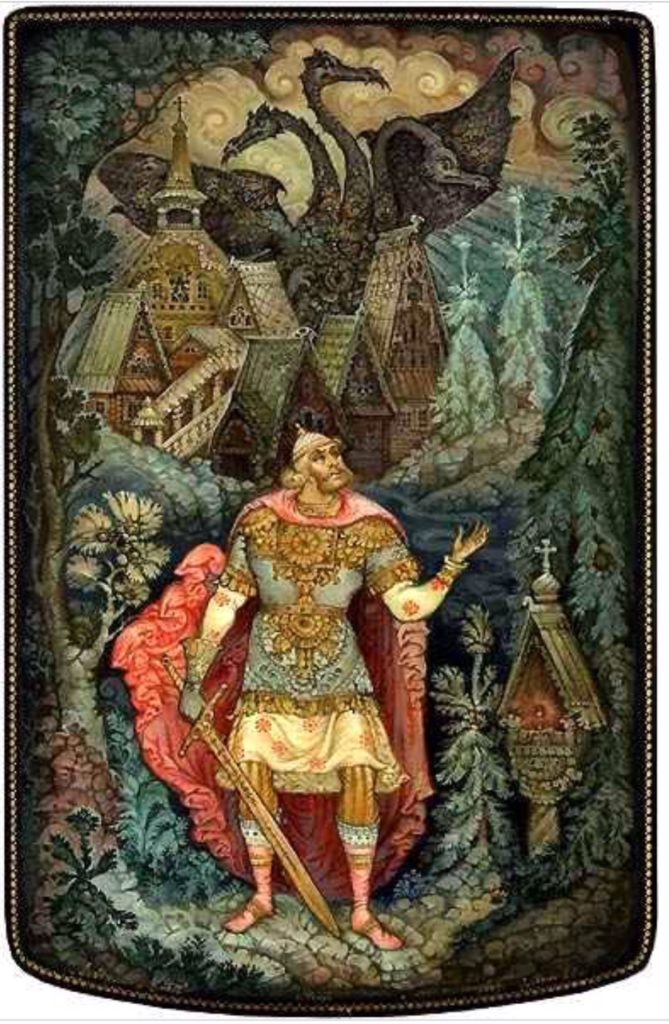
One other contemporary lacquerware artist whose style is so hauntingly reminiscent of Byzantine painting is also shown here with a naval battle in an archaic style. That endearing artist is Zheryakova Galina and the work below exemplifies a bluer palette offset by orange as ma complementary hue, as would be expected with a marine scene, but just as beautiful as the red and gold colors of Palekh and Kholuy.
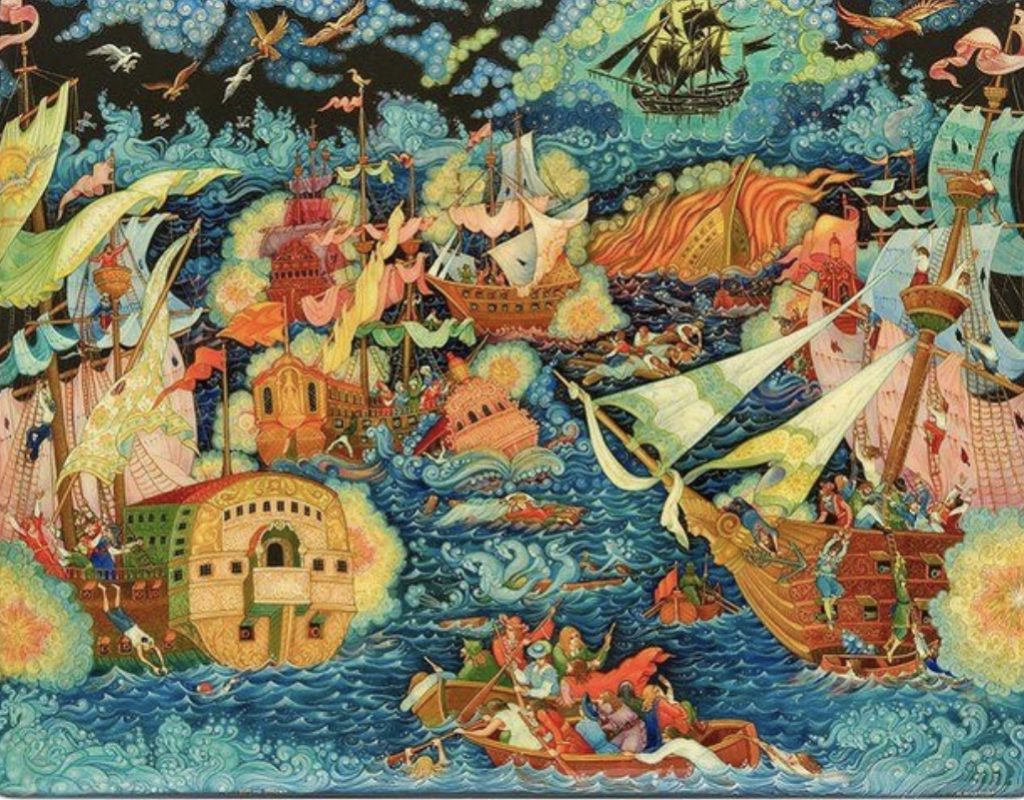
Whatever style the range of Russian lacquerware offers, we only wish we had purchased more pieces in St. Petersburg (not only available at the Hermitage but also showcased in the posh Gostiniy shopping district just south of Nevsky Prospect and just east of Kazan Square) when were we there over a year ago for enhancing our collection. We treasure this lacquerware tradition as one of the most authentic forms of folk art in the world, unique and worthy of closer inspection not only for its miniature art but also for its preservation of a mostly lost romantic age that Tchaikowsky and Pushkin. My husband, a Classical composer and author, had a piano and flute premiere in the Stravinsky Suite of the Belmond Grand Europe Hotel performed by musicians from the Mariinsky and we should have commemorated this highlight event with another Russian lacquerware somewhat like the miniature treasure he purchased for me that London Christmas Eve decades ago!